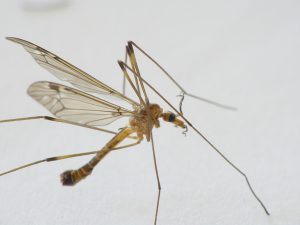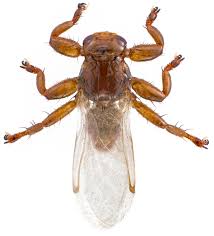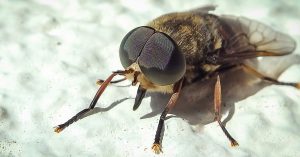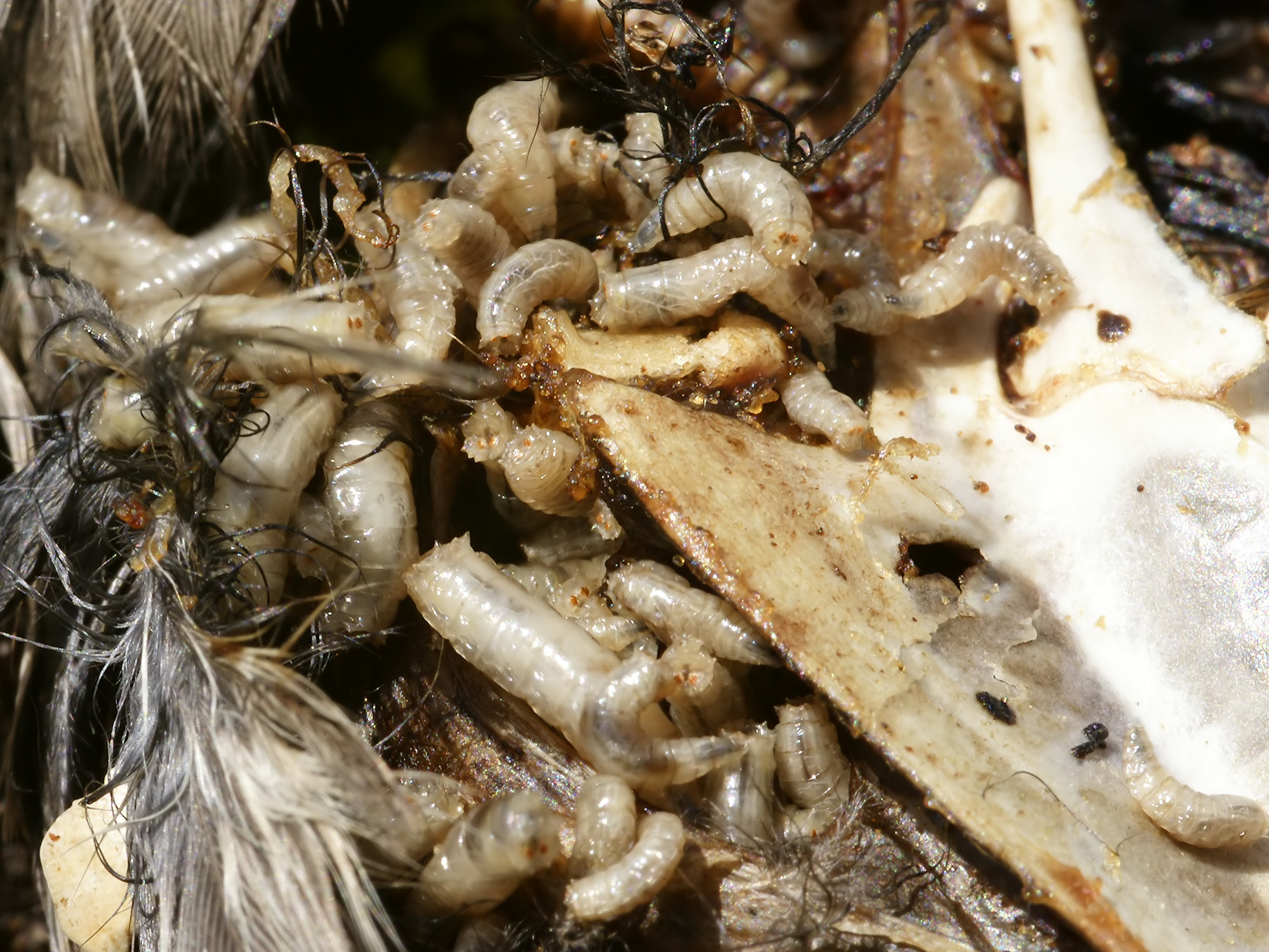Week 9: Reading
The Human Body Biome
Arguably, the most dangerous organism to mankind is a tiny Dipteran: the tiny mosquito (of which there are several species globally), are responsible for vectoring many diseases. One of the diseases vectored by mosquitoes, the protist that causes Malaria, is responsible for approximately one million human deaths each year, and infecting around 10% of the total human population each year. The mosquito is not alone: there are many other Diptera species that will feed on the blood of other organisms, and more insects in other orders as well (a few common ones listed at the end of this section).
The Diptera are divided into three sub-orders: the Nematocera (long-horned flies), the Brachycera (short-horned flies), and the Cyclorrhapha (the aristate flies). The “horn” refers to the length of the antennae, though it’s important to note that both the Brachycera and Cyclorrhapha have short antennae – the Brachycera have stylate antennae instead of aristate (this might be a good time to review antennal structures and shapes).
Sub-Order Nematocera

Mosquitoes belong to the family Culicidae (figure 9-1). Females of mosquito species are the blood-feeders, seeking out prey by following CO2 plumes from exhaled breath, the scent of lactic acid and other cues. Females can feed on several different hosts of different species, and once engorged, stretch receptors in the abdomen trigger egg maturation using the nutrients gained. As a result, a well-fed female can experience more frequent reproductive events, laying a few hundred eggs each event. The eggs are usually laid in wet or moist conditions, and can survive drying regimes as long as 8 months until water returns, triggering hatch (the larvae and pupae cannot survive without water). In general, male mosquitos do not blood feed (in nature) because they lack the proboscis structure capable of penetrating the skin to blood-feed, thus consuming mostly nectar for sustenance.

Though mosquitoes are prey for many predatory species, there is no evidence that they are vital to any one ecological system for nutrient and energy transfer – most predatory species feeding on mosquitos have a wide range of prey species available. In addition, the “mosquito eater” or “mosquito hawk” as it commonly called (figure 9-2) does not feed on mosquitoes at all. Another Nematoceran, these crane flies belong to the family Tipulidae, and as adults have atrophied gut parts. They do not feed as adults at all.

There are several families that can be folded into the general designation “midges” (common name), and of these there are a few that will feed on human blood, animal blood, and the hemolymph of other arthropods and insects. The exceptional family in this regard are the Chironomidae (figure 9-3), which although can be a pestilence due to sheer number in areas of synchronized emergence, do not pose a human health risk as biting insects. The common name “no-see-ums” usually refers to midges in the family Ceratopogonidae, insects known for causing several itchy bites that don’t rise or becoming irritating for hours following the actual bite. The salivary elements of these insects and the number of bites accumulated have caused reactions that persist for weeks on end, headaches and even symptoms of vertigo that persists for days on end. Because of their small size, black flies (family Simuliidae) are sometimes confused as midges; though these are in the sub-order Nematocera, they are more robust in appearance and not part of the general group of midges.
Sub-Order Brachycera

Hippoboscidae are a family of blood-feeding parasites that usually plague only livestock in high numbers, but can be detrimental to milk production and vitality so much so that young can die of the induced stress. There are species both winged and wingless in this family, generally referred to as “keds” (figure 9-4), and each species is host-specific. A deer ked may bite a human and feed on blood, causing and irritating rash at the site, but deer keds cannot complete their lifecycle on human blood – they require blood from a deer.
There are several additional species in the Tabanidae family, generally referred to as “Horse Flies” or “Deer Flies” (figure 9-5) that are less specific to the species. These flies can deliver a very painful bite – not nearly as subtle as the delicate proboscis of the Nematocera, but instead using a saw-like mouthpart to penetrate the skin. In many species, the saliva contains an enzyme that behaves as an anti-coagulant, causing the host to bleed freely while the secondary mouthpart, the labellum, is used as a sponge to ingest the blood.
Sub-Order Cyclorrhapha

Members of this sub-order also have a simplified labellular mouthpart, but though few are biting/feeding on humans as adults, they can cause discomfort through the spread of waste and disease, like the common house fly in the family Muscidae. Not only are these notorious for the spread of diphtheria, dysentery and even plague, but their affinity for decay can be problematic for other reasons. For example, forensic scientists attempting to determine cause of death based on blood spray patterns can find confusing traces of blood where flies have waded through wet material and spread it to other locations.

Also notorious for their affinity for decomposing meat, the larger Calliphoridae flies are typically the first visitors to a carcass, the adults flying in to lay eggs in the meat within minutes (figure 9-6). These are the most common flies used to establish time of death in forensic science, though they aren’t only about dead food materials. Calliphorid maggots have enjoyed somewhat of a resurgence for use in medical debridement procedures, as they can rapidly remove dead and dying tissue thus stimulating new growth and healing. The saliva of these species contains natural antimicrobials to protect the feeding maggots, and thus, medical maggot debridement tends to keep wounds clean.
A closely related family, the Phoridae,include one species commonly referred to as the “coffin fly”. Like the Muscids, Megaselia scalaris is often found where refuse and decay abound. There are many practical uses for this species: first, they are used a indicators of neglect or abuse, unsanitary care conditions in places like orphanages and nursing homes; second, these insects can help forensic scientists locate crude burial sites, even in cases where the inhabitant of the “grave” has been buried for several months. These flies are so adept at finding resources that they can find sites where carrion has been buried several feet below the ground and actually prefers carrion in advanced stages of decay.
Common Non-Dipteran Feeders: Siphonaptera (Fleas), Bed Bugs (Heteroptera: Cimicidae), Kissing Bugs (Heteroptera: Reduviidae), Anoplura (Sucking Lice)
Insect Stress
There are other ways for insects to behave as a human stress factor besides feeding on blood and tissues – there are a multitude of biting, stinging insects that often surprise and disrupt typical human activities. This has not escaped the attention of especially enterprising humans over the ages, and as a result the tendency for unpleasantness with these types of insects has been capitalized upon for reasons of war and retribution.
One of the first methods of waging war involved the hurling of bee hives at the enemy, and our technology utilizing insects are tools of war has evolved greatly. For example, during World War II the notorious commander Shiro Ishii was responsible for the deaths of over 3,000 Chinese captives, lost to his insane “experiments” attempting to harness insects as vectors of disease that could be mass reared and released on enemy forces – specifically, fleas carrying bubonic plague.
Unfortunately, Ishii hasn’t been alone in history in his endeavors, and indeed the US has a medical command installation at Fort Detrick, where a great deal of research concerning potential bio-warfare agents are studied and developed. These agents included diseases caused and vectored by everything from bacteria to insects and rodents.
Not all of the work involving these pesky species is meant for the offensive, however; there is also ongoing research and rapidly-advancing technology that could stay the effects of one such biological attack on the U.S. One of the more prevalent programs has developed Sterile Insect Techniques (SIT) with applications that are broadly meaningful. SIT programs create massive numbers of sterile male insects, like male mosquitos, that are released into local breeding populations to compete for the females as mates. Females mating with the sterile males produce no young, and in areas where these programs have been utilized over the last 10 years, we’ve seen drastic reductions in populations. With the decrease in mosquito populations, there is a much better chance of containing the spread of mosquito-borne diseases. With advances in this field, it may become possible to harness this technology to also better manage agricultural pests.
For further reading on this subject:
Jeffrey A Lockwood. Six-legged soldiers: using insects as weapons of warfare. 2009. Oxford University Press Inc; New York.

